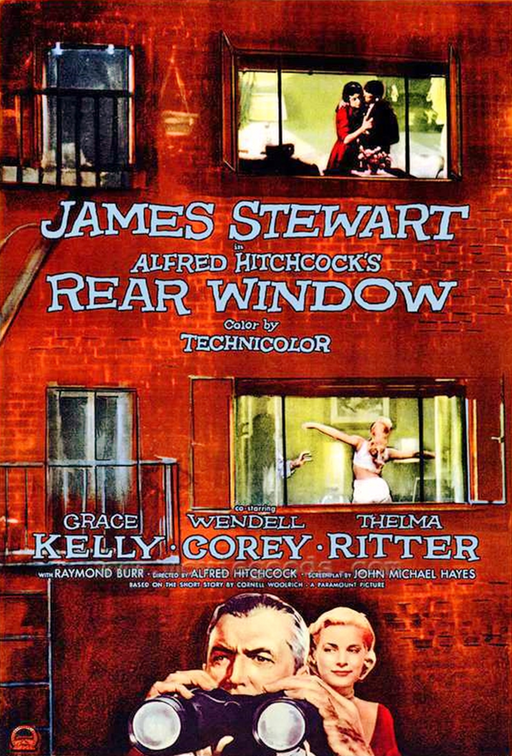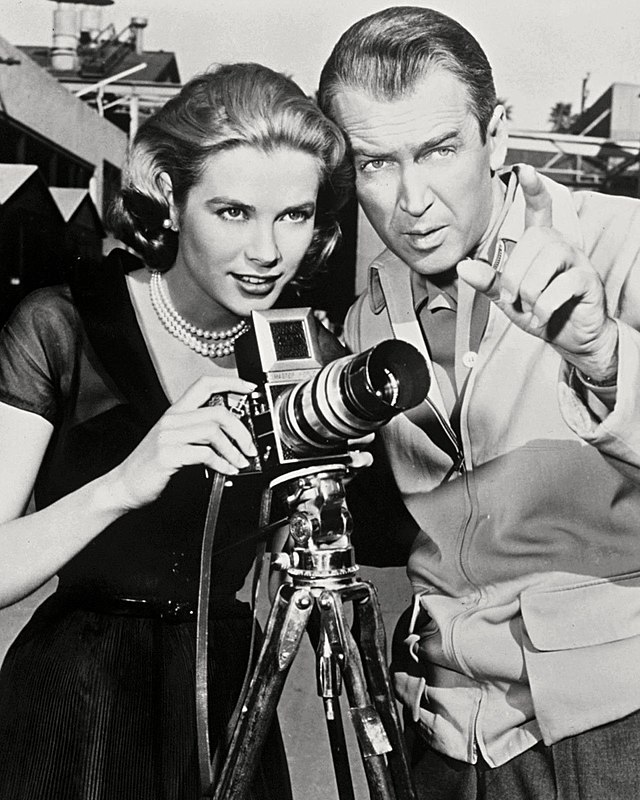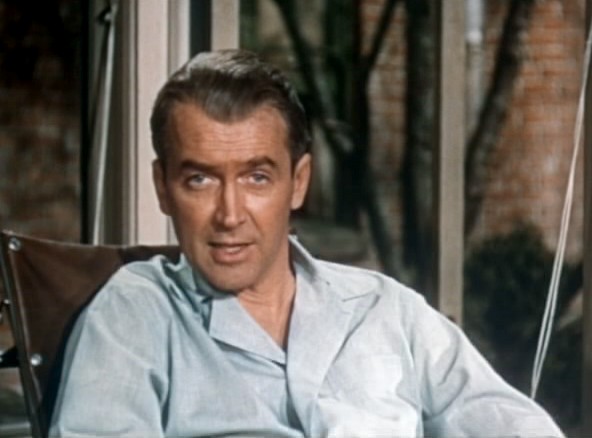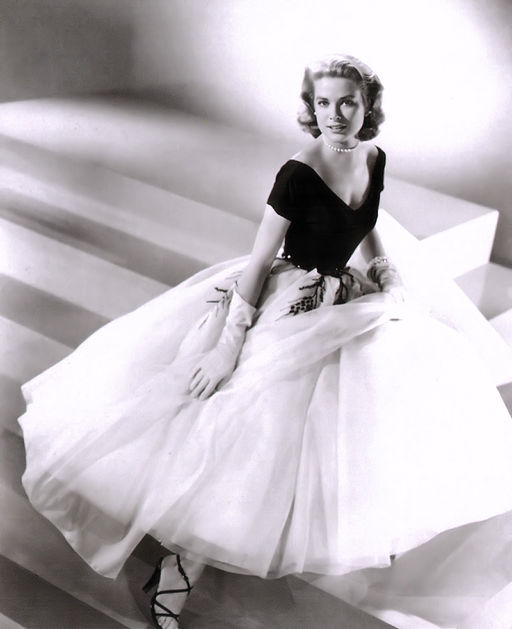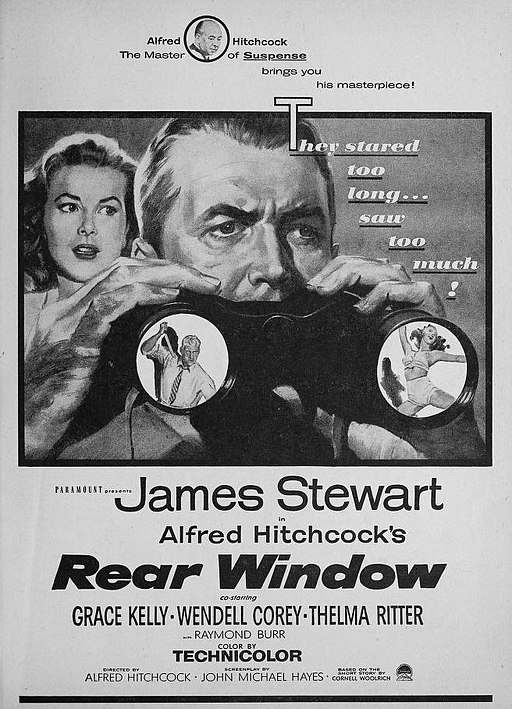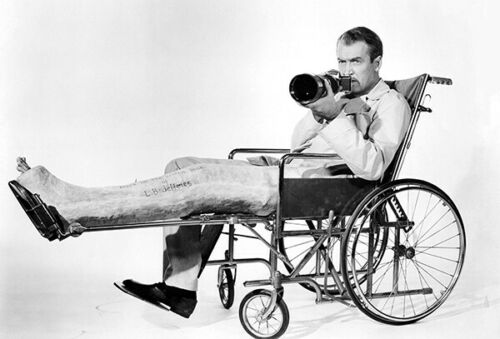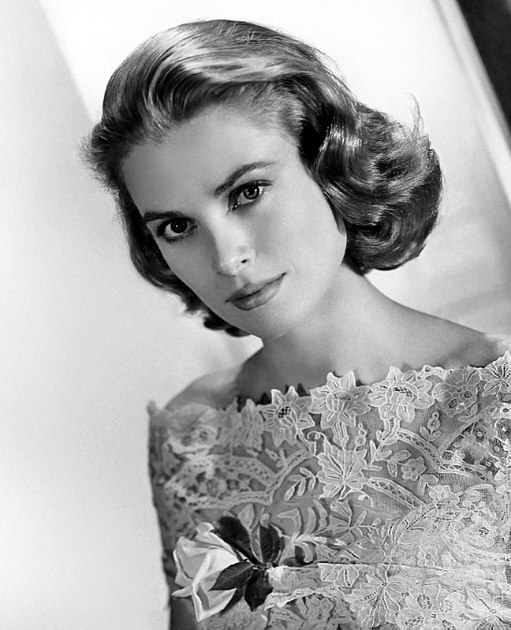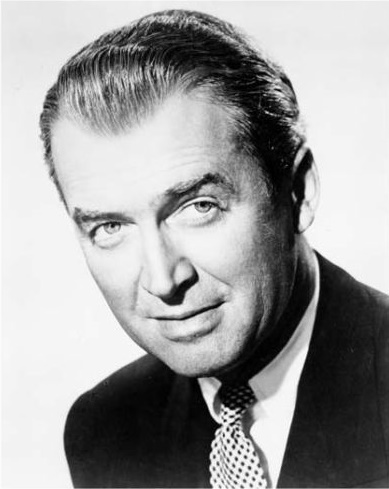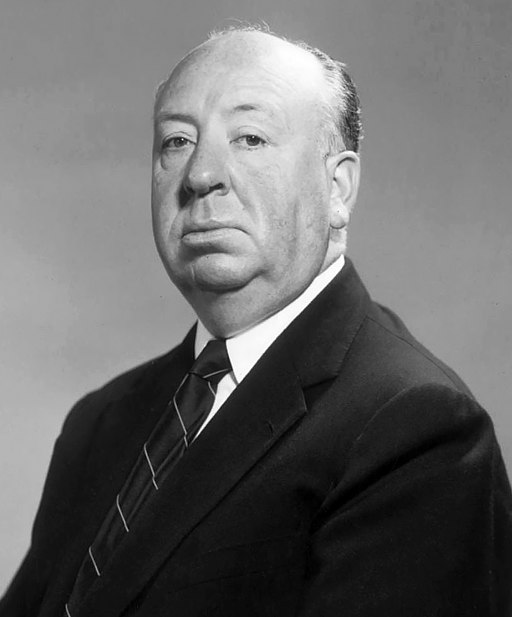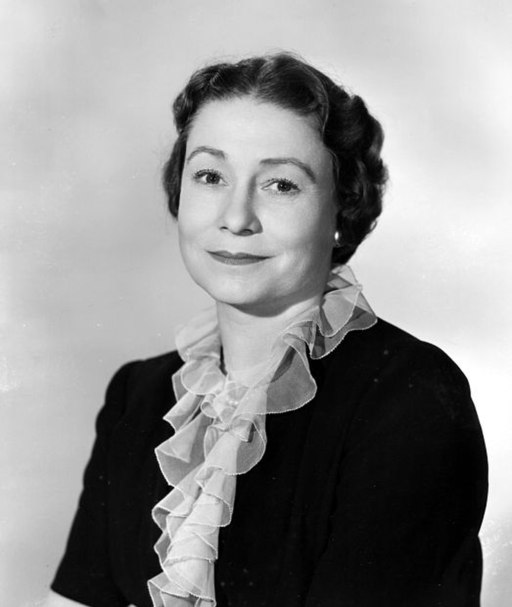Rear Window – 1954
back| Released by | Paramount Pictures |
| Producer | Alfred Hitchcock |
| Script | John Michael Hayes. Based upon the short story “It had to be Murder” by Cornell Woolrich (1942) |
| Cinematography | Robert Burks |
| Music by | Franz Waxman |
| Running time | 112 minutes |
| Film budget | 1 million Dollar |
| Box office sales | $36.76 million at the box office globally |
| Main cast | James Stewart - Grace Kelly - Thelma Ritter - Raymond Burr |
| Director | Alfred Hitchcock |
Rear Window – Hitchcock’s masterpiece from 1954
“Rear Window,” directed by Alfred Hitchcock in 1954, is a cinematic masterpiece, acclaimed for its innovative approach to storytelling and cinematography. The film unfolds from the confined perspective of L.B. Jeffries, a photographer bound to his wheelchair, who becomes obsessed with observing his neighbors from his apartment window. Hitchcock’s genius lies in his ability to transform this limited space into a captivating visual spectacle.
The movie is a testament to the power of visual storytelling, with Hitchcock masterfully using camera angles, framing, and movement to convey suspense, curiosity, and a range of emotions. The director’s innovative use of a subjective camera immerses the audience in Jeffries’ voyeuristic experience, blurring the lines between observer and participant.
Hitchcock’s manipulation of space and perspective had a profound impact on the art of cinematography, showcasing how constraints could be leveraged to enhance narrative depth and viewer engagement. The film’s meticulous composition, coupled with its thematic exploration of voyeurism and privacy, has solidified its status as a groundbreaking work, influencing generations of filmmakers and cementing its legacy in the annals of cinematic history.
Related
Plot Rear Window
"Rear Window" unfolds almost entirely within the confined space of a Greenwich Village apartment and its rear courtyard, mirroring protagonist L.B. Jeffries's physical confinement. Jeff, a professional photographer, is wheelchair-bound, nursing a broken leg and passing the tedious hours of recovery by observing his neighbors through the rear window of his apartment.
Jeff’s rear window opens up to a courtyard surrounded by other apartments, each window revealing snippets of the lives within: a frustrated composer, a lonely woman, a bickering couple, and so forth. However, it’s the troubling activities in the apartment of Lars Thorwald, a traveling salesman, that snag Jeff's undivided attention.
As Jeff, alongside his high-society girlfriend Lisa and pragmatic nurse Stella, begins to suspect Thorwald of murdering his wife, the trio embarks on a dangerous journey to unearth the truth, peering ever deeper into the private lives and dark secrets hidden behind the adjacent windows.
Box Office and Financial Results
- Initial Success: Upon its release in 1954, "Rear Window" was a considerable success at the box office.
- Box Office Figures: The film grossed approximately $36.76 million at the box office globally. In the United States, it earned around $17.5 million, making it one of the highest-grossing films of the year.
- Budget: The movie was made on a budget of an estimated $1 million, which was a substantial budget for the time but also reflective of the high-quality production.
- Re-releases: The film had subsequent re-releases, including a notable one in 1983, which also contributed to its overall box office figures and allowed a new generation of moviegoers to experience it on the big screen.
Audience Reception
- First year attendance: Exact attendance figures from the 1950s are challenging to ascertain. But calculating with an average ticket price of $ 0,60 and the box office figure of $ 17,5 million in the first year we can estimate that approximately 29 million people in the United States alone attended the movie in a cinema.
- Critical Acclaim: The movie was not only a commercial success but also a critical one. "Rear Window" was lauded for its innovative cinematography, compelling narrative, and stellar performances, cementing Hitchcock’s status as a master of suspense.
Subsequent Impact
- Legacy and Ongoing Popularity: "Rear Window" has sustained its popularity and acclaim, often featuring in lists of the greatest films of all time.
- Home Media and Streaming: Through the advent of home media and streaming platforms, "Rear Window" has continued to be discovered by new audiences, adding to its viewer base and sustaining its financial longevity through sales and licensing.
- Cultural Impact: The movie has had a significant cultural impact, influencing numerous filmmakers and inspiring various adaptations and homages across global cinema.
Prizes & nominations Rear Window:
Academy Awards (Oscars) - 1955
- Nominated for Best Director: Alfred Hitchcock
- Nominated for Best Writing, Screenplay: John Michael Hayes
- Nominated for Best Cinematography, Color: Robert Burks
- Nominated for Best Sound, Recording: Loren L. Ryder (Paramount SSD)
Directors Guild of America (DGA) - 1955
Nominated for Outstanding Directorial Achievement in Motion Pictures: Alfred Hitchcock
National Film Preservation Board, USA - 2001
- "Rear Window" was selected for preservation in the United States National Film Registry by the Library of Congress as being "culturally, historically, or aesthetically significan
Full Cast Rear Window
Main Characters
- James Stewart as L.B. "Jeff" Jefferies: A professional photographer who becomes a voyeuristic observer of his neighbors during his convalescence.
- Grace Kelly as Lisa Carol Fremont: Jeff's sophisticated and daring girlfriend.
- Wendell Corey as Detective Lieutenant Thomas J. Doyle: A police detective and friend to Jeff, who is skeptical of Jeff’s murder theory.
- Thelma Ritter as Stella: Jeff's nurse who provides practicality and moral guidance.
- Raymond Burr as Lars Thorwald: The primary antagonist, suspected of foul play by Jeff.
Neighbors (Observed through Jeff’s Window)
- Judith Evelyn as Miss Lonelyhearts: A melancholic woman seeking companionship.
- Ross Bagdasarian as Songwriter: A composer trying to craft his next hit.
- Georgine Darcy as Miss Torso: A dancer garnering the gaze of her surrounding neighbors.
- Frank Cady and Sara Berner as Couple on the Fire Escape: A couple often seen sleeping outside.
- Jesslyn Fax as Sculpture Woman: Engaged in molding clay figures.
- Rand Harper and Havis Davenport as Newlyweds: The lives of a just-married couple.
- Irene Winston as Mrs. Anna Thorwald: Lars Thorwald's wife, whose sudden disappearance triggers Jeff’s suspicions.
Additional Characters
- Alan Lee as Landlord
- Anthony Warde as Detective
- Dick Simmons as Man on Fire Escape
- Eddie Parker as Simms, the Waiter
- Lee MacGregor and Bess Flowers as Guests at Songwriter's Party
Uncredited Cast
- Sara Berner as Woman on Fire Escape
- Marla English as Girl at Songwriter's Party
- Bess Flowers as Songwriter's Party Guest with Poodle
- Alfred Hitchcock (cameo) as Clock-Winder in Songwriter’s Apartment
- Anthony Warde as Detective
In-depth Analysis of the movie Rear Window
1. Voyeurism and Cinema
"Rear Window" actively engages with the theme of voyeurism, propelling the audience into Jeff’s perspective as silent observers of the intimate affairs of strangers. The film prompts reflection on the voyeuristic nature of cinema itself, as audiences are made complicit in Jeff’s surveillance, embodying his curiosity and fears.
2. Physical and Emotional Confinement
Jeff’s physical confinement reflects not only his spatial limitation but also his emotional and commitment reservations towards Lisa. The microcosm of lives he observes echo various aspects of relationship dynamics, allowing the film to explore deeper emotional undercurrents and psychological nuances.
3. Gender Roles and Dynamics
Lisa, initially portrayed as merely a glamorous figure, eventually subverts the stereotypical representation of women in 1950s cinema. Her brave, proactive role in the investigation defies the damsel-in-distress trope, facilitating discussions about femininity, bravery, and independence in an era constrained by rigid gender norms.
4. Aesthetic Mastery
Hitchcock's aesthetic choices, such as his meticulous use of color, framing, and diegetic sound, transform the limited setting into a dynamic, multifaceted visual spectacle. His innovative cinematographic techniques, like the carefully choreographed “dolly zoom” shots, further enrich the film's narrative depth and suspense.
5. Symbolism and Metaphor
Each neighbor represents various facets of society and individualistic fears or desires. From Miss Lonelyhearts to the songwriter, each subplot is a metaphorical reflection on isolation, ambition, despair, and societal pressure, forming a rich tapestry that complements and contrasts with the central narrative.
6. Contrasting Realities
The stark contrast between the jovial, bustling New York City streets and the dark, sinister undertones lurking within the seemingly ordinary apartments is a powerful reminder of the disparate realities that coexist within urban life, speaking to the isolation and secret tragedies obscured by the city’s energetic facade.
7. Impact on Future Cinema
"Rear Window" has left an indelible mark on the genre of suspense and thriller cinema, influencing a myriad of filmmakers and establishing paradigms for storytelling, suspense-building, and visual narrative techniques. Its legacy persists as it continues to be studied and referenced in contemporary cinema and academic discourse.
8. Stellar Performances
Stewart’s portrayal of Jeff masterfully balances sympathetic vulnerability with moral ambiguity. Kelly dazzles not only in her striking elegance but also through conveying Lisa’s steely determination and intelligent poise. The cast, even in the minor roles, delivers exemplary performances that breathe life into Hitchcock’s artistic vision.
9. Moral and Ethical Dilemmas
The film doesn’t shy away from the moral and ethical questions posed by Jeff’s actions. The internal tug-of-war between rightful intervention and intrusive voyeurism looms large, inviting audiences to reflect on the blurred lines between moral duty and unethical curiosity.
10. Hitchcock's Signature Style
The film epitomizes Hitchcock’s mastery in manipulating audience emotions, crafting suspense, and weaving intricate narrative threads. His ability to combine a compelling story with technical prowess and psychological depth exemplifies why Hitchcock is revered as one of cinema’s greatest directors.
Conclusion
"Rear Window" is a compelling tale that interweaves suspense, romance, and philosophical musings, striking a delicate balance that continues to captivate audiences nearly seven decades later. It is a masterpiece of cinematic storytelling and a testament to Hitchcock’s timeless allure as a filmmaker, presenting an absorbing narrative while simultaneously unraveling the complex tapestry of human desires, fears, and morality.
Analysis of the role of Lisa Fremont played by Grace Kelly
Grace Kelly's performance in "Rear Window" (1954) is emblematic of her elegance, charisma, and capacity to express complex emotions with subtle grace. Her character, Lisa Carol Fremont, becomes essential not just as a romantic interest but as a key player who aids in unraveling the plot's mystery.
Performance and Character Development
Initial Perceptions
- The High-Society Dilemma: Lisa is initially portrayed as a high-society fashion consultant, seemingly ensconced in a world starkly disparate from Jeff's rugged, adventurous lifestyle.
- Surface-Level Glamour: Her introduction, with an ethereal close-up as she leans in to kiss Jeff, is steeped in glamour and a seemingly detached elegance.
Multifaceted Persona
- Duality: Kelly brings a beautiful duality to Lisa, intertwining vulnerability and audacious determination.
- Depth Beyond Elegance: As the story progresses, Lisa’s depth and intelligence surface, dismantling Jeff's (and the audience's) preconceived notions about her.
Agent of Action
- Courage Amidst Elegance: Lisa moves from the elegant, seemingly fragile figure to a daring woman who's unafraid to risk safety to uncover the truth. Her decision to physically investigate Thorwald’s apartment showcases her courage and resourcefulness.
- Imperative to the Plot: Her actions, far from mere impulsive bravery, are pivotal, propelling the plot towards its climax and resolution.
Chemistry and Relational Dynamics
- Contrast and Complement: Kelly and Stewart’s on-screen chemistry is palpable. Lisa's poised elegance contrasts Jeff’s rugged pragmatism, offering a visual and thematic dichotomy that enriches the narrative.
- The Emotional Anchor: Lisa represents an emotional anchor and a lens through which the audience can explore themes of love, commitment, and partnership amidst the overarching suspense.
Emotional Nuances
- Expressive Facets: Kelly masterfully delivers a range of emotions, from playful flirtation and sincere love to intense fear and assertive confrontation.
- Subtle Resilience: Her performance captures the audience's empathy and admiration, especially in scenes where her vulnerability is juxtaposed with resolute strength.
Impact and Legacy of Grace Kelly’s role
- Iconic Fashion: Kelly’s wardrobe in "Rear Window" has become emblematic of 1950s fashion. Her iconic looks, curated by costume designer Edith Head, underscore her character’s sophistication while subtly reflecting her evolving role within the narrative.
- Defying Stereotypes: Kelly’s portrayal of Lisa breaks away from the stereotypical confines of 1950s female roles in cinema, presenting a woman who, while embracing her femininity and elegance, navigates the perilous terrain of a murder investigation with astuteness and bravery.
- Unforgettable Scenes: Her scenes, especially the daring investigation into Thorwald’s apartment, have been etched into the annals of cinematic history, representing a seamless blend of suspense, vulnerability, and heroism.
Conclusion of Grace Kelly’s performance
Grace Kelly’s performance in "Rear Window" transcends the archetype of the 1950s leading lady. She balances glamour with substantive, action-oriented character development, enhancing the film’s thematic depth and narrative engagement. Her portrayal of Lisa foregrounds the notion that femininity, intelligence, courage, and depth can coexist harmoniously, thereby enriching the film’s layered narrative and thematic undertones. Kelly, through Lisa, became not just a spectator but an active, indispensable participant in the unraveling suspense, immortalizing her performance in Hitchcock’s masterpiece.
Analysis of the role of L.B. Jeffries played by James Stewart
James Stewart’s portrayal of L.B. "Jeff" Jefferies in "Rear Window" is an intricate web of complexity, expertly crafted and convincingly portrayed. Jeff is a professional photographer, adventurous at heart, who finds himself in a predicament that confines him physically and challenges him emotionally and ethically.
Performance and Character Development:
Voyeuristic Explorer
- Curiosity and Compulsion: Stewart’s Jeff exhibits a curiosity that morphs into an obsessive compulsion, pulling the audience along into his voyeuristic pursuits.
- Balancing Sympathy and Moral Ambiguity: He manages to elicit sympathy despite the ethical quandary of his actions, offering a morally ambiguous character that fascinates and perplexes.
Physical Limitation vs. Proactive Engagement
- Frustrated Adventurer: Despite physical confinement, Stewart expresses a restless energy, portraying Jeff’s frustration and insatiable thirst for adventure and action.
- Expressive Confinement: His performance utilizes facial expressions and body language, communicating volumes despite the physical limitations of his character.
Complex Emotional Tapestry
- Reluctant Lover: Jeff’s hesitation towards commitment and his subdued vulnerability are subtly communicated through Stewart’s nuanced performance.
- Fear and Tension: Stewart’s ability to manifest fear, anxiety, and tension, especially in the climactic moments, stands out, solidifying the audience’s emotional investment in his character.
Intellectual and Ethical Struggle
- Moral Dilemma: The audience is privy to Jeff’s internal struggle with voyeurism and intervention through Stewart’s expressions of conflict, unease, and justification.
- Analytical Mind: His investigative spirit and analytical approach to unraveling Thorwald’s mystery are compellingly portrayed, drawing the audience into the intellectual thrill of the mystery.
Impact and Legacy of James Stewart’s role
- Endearing Relatability: Stewart, with his signature affable charm, makes Jeff relatable, portraying him as an everyday man thrust into an extraordinary situation.
- Embodiment of Curiosity: His portrayal becomes a reflection of innate human curiosity, exploration of morality, and a depiction of multifaceted humanity - characteristics that resonate universally.
- Symbolic Representation: Stewart’s Jeff embodies the classic Hitchcockian protagonist, teetering on the edge of moral ambiguity while entwining the audience in his ethical dilemmas and adventurous spirit.
- Iconic Performances: Certain scenes, like Jeff helplessly witnessing Lisa’s ordeal in Thorwald’s apartment and the climactic confrontation with Thorwald, remain ingrained in cinematic history, thanks to Stewart’s credible and evocative performance.
Conclusion of James Stewart’s performance
James Stewart brought to life a character that was both an observer and a participant, a lover and a skeptic, an adventurer and a prisoner. His portrayal of L.B. "Jeff" Jefferies was an exploration into the depths of human curiosity, morality, fear, and love. He navigated the delicate balance of ensuring that a character, engaging in ethically dubious actions, retained the audience’s empathy and engagement. Stewart’s performance became pivotal in intertwining the film’s suspenseful narrative with emotional depth and philosophical exploration, creating a cinematic experience that continues to resonate with audiences. His ability to manifest the complexities and dichotomies within Jeff has contributed significantly to "Rear Window" being heralded as one of Alfred Hitchcock’s quintessential masterpieces.

